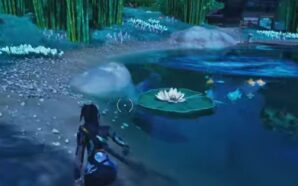A photograph captured by the rover Curiosity has lit the imagination of the most passionate space researchers. What makes this picture different from what the experts have received so far from the Martian soil is that it features an accumulation of shiny minerals in the form of a “flower”. This spectacular view managed to spark the imagination of Internet users and enthusiasts of the field of space research, who started various speculations about the existing of vegetation on a planet everyone thought was dead. Like the “mysterious” glowing object photographed by the rover Curiosity on Mars in October 2012, which ultimately proved to be a metal piece detached from the robot, the NASA rover sent on the red planet sent another strange object in a photograph, encrusted in a Martian rock, whose origin has not yet been explained by scientists, according to sources from discovery.com.
While using its robotic arm equipped with a high performance camera at the end (Mars Hand Lens Imager / Mahle) in order to make a series of high-definition photos of the Martian crust, in an area called “Yellowknife Bay” on December 19, 2012, the Curiosity rover photographed a bright object, and that photo was posted on the website of the space mission. The discovery immediately captured the attention of Internet users and various fans of space exploration missions from all over the world. The information was also extensively commented on various websites in the field. Alerted by all the speculations surrounding the unidentified object immortalized on the red planet, which was ultimately called the “Martian flower”, Alan Boyle, journalist affiliated with the science department of the MSNBC cable television station in the United States, believed at first that the object was nothing more than another piece accidentally detached from the Curiosity rover. It seems that this hypothesis was disproved, however.
Guy Webster, NASA spokesman, revealed that initial analysis has confirmed that the bright object is embedded in the Martian rock, part of it being an object that fell on the rock. “It seems that the object is a part of a rock, not something detached from the robot,” said Guy Webster. The MAHLE high-resolution camera produces images with close ups of the Martian crust and its lenses have great object magnification properties. For this reason, scientists at NASA believe that the unidentified object – which is shaped like a “flower” is in fact a very small one. According to the same source, discovery.com, science enthusiasts tend to believe, in an optimistic and perhaps irrational manner, in the existence of evidence of the presence of plant or animal fossils on Mars, but, after all, the object discovered by the rover Curiosity in December is a mere agglomeration of minerals, inlaid in a Martian rock. If, on the other hand, someone will prove that the discovery made by the robot sent on Mars is in fact related to the existence of some forms of vegetations on the red planet this could represent major progress for this project.
-
America’s Favorite Car, the Camry, Takes a Green Turn with Hybrid-Only 2025 Model. In a groundbreaking announcement, Toyota, the...
-
Rishi Sunak stresses the need for external control in managing AI risks at the AI Safety Summit. UK Prime...
-
Tech Billionaire Proposes Renaming Wikipedia to ‘Dickipedia’ in Exchange for Record Donation In a recent social media spectacle, tech...
-
A recent investigation by the Wall Street Journal has exposed Instagram’s alleged involvement in facilitating illegal activities, particularly concerning...
-
NASA is seeking public help with the Daily Minor Planet project. The Daily Minor Planet Project is a...
-
The rise of electric vehicles (EVs) has been a hot topic for the last several years, but what is...
-
If you remember the classic story of Alice in Wonderland, you probably remember the part where Alice stumbles upon...
-
While Pokemon Go is a social game first and foremost, it can be a little difficult to communicate and...
-
In its more recent seasons, Fortnite has gotten steadily more ambitious with its use of NPC characters. Long gone...
-
As any Fortnite player can tell you, Fortnite is a game with a heavy emphasis on motion. You gotta...
-
If there’s one classic Disney movie that got kids interested in the wildlife of Africa, it was The Lion...
-
Throughout Coffee Talk’s cast of humans and humanoids, one of the major standouts is Neil, a mysterious alien lifeform...



















